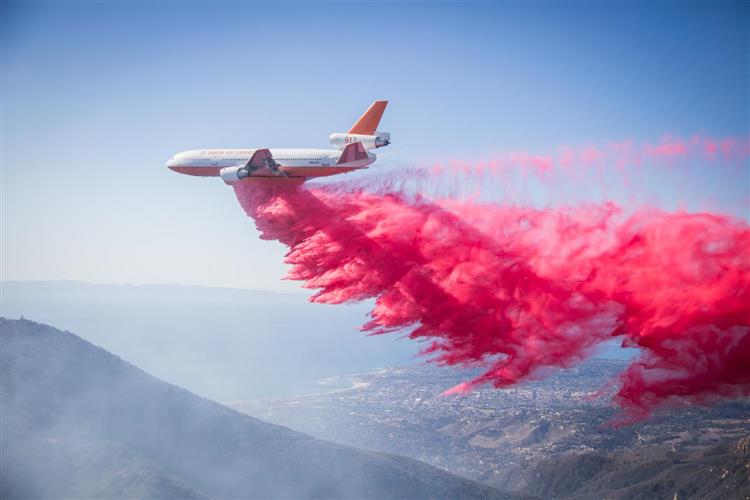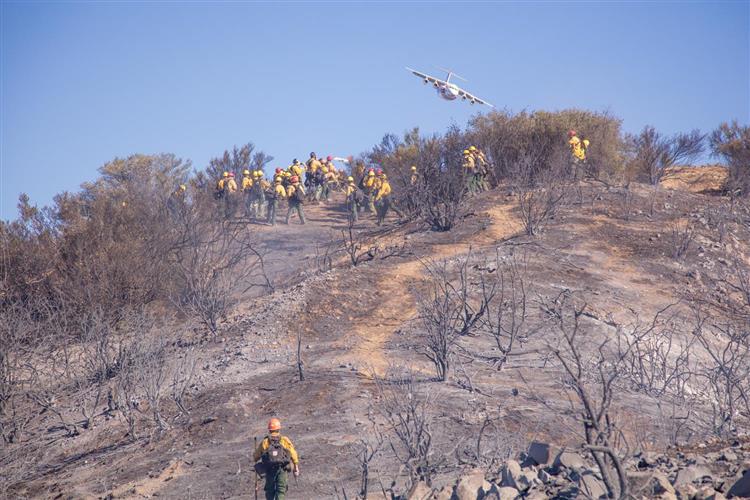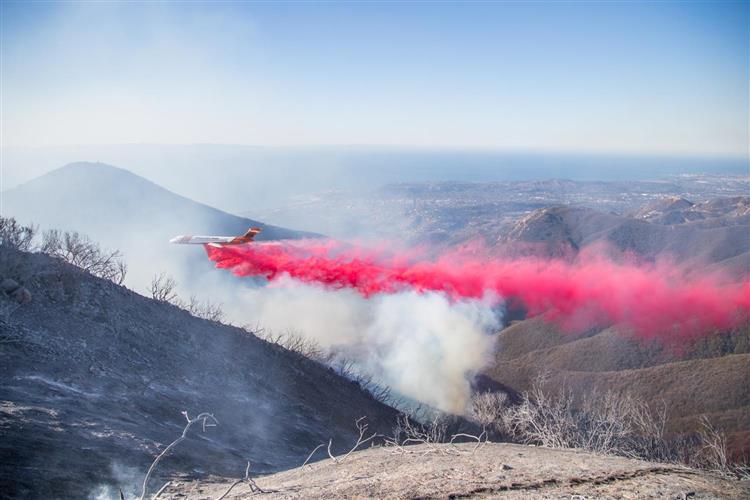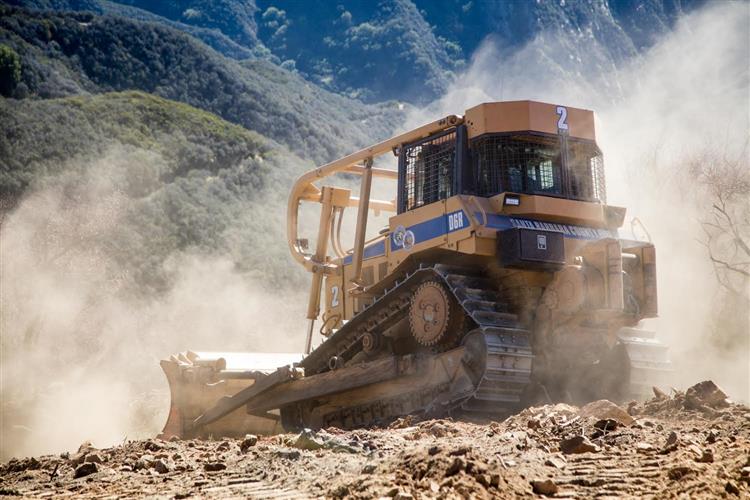Gibraltar Fire Recounted from the Front Lines
Heavy Aerial Attack Appears to Have Helped Containment

At 8 a.m., as I arrived near the top of the Cold Springs Trail, there were dozens of engine crews on scene. Fire personnel were setting up hose lines, cutting hand line, and assessing conditions. The wind was wicked, gusting to 30 mph, blowing in every which direction — and given the steep topography, drought conditions, and difficult access — it appeared that Santa Barbara might be in for another huge wildfire.
The fire’s origin appeared to be just north of Montecito Peak and close to Cold Springs Trail, perhaps a mile down the trail from the crest of the Santa Ynez Mountains and just up trail from the steep path leading to the top of Montecito Peak. While fire officials say that the cause of the fire is still under investigation, given the lack of other sources it is almost certainly human caused.

Those who were up early enough to see the fire noted that it burned uphill quickly, with flames in the 30-foot range or higher until it reached the ridge separating Cold Springs and San Ysidro Canyons. It then slopped over into the San Yisdro drainage and began burning uphill towards the crest, at one point coming within several hundred yards of East Camino Cielo Road.
Firefighters faced a difficult challenge, with thick, almost impenetrable brush in both canyons, no clear containment line either east or west, and just one narrow ridgeline to use for their initial attack. While hand crews worked along the ridge to open it up to the south, two massive bulldozers began the dangerous task of opening up a 20-foot-wide line down into Cold Springs Canyon. On the San Ysidro Canyon side, other crews worked to cut a hand line below the ridge to establish a containment line along the east edge of the fire line.

Despite this, conditions were not promising. Wildfires do not typically get contained mid-slope in steep, rugged canyons like Cold Springs or San Ysidro. The question turned on two simple propositions: would it be possible to mass enough air support to blanket both sides of the ridge and the saddle between the fire line and Montecito Peak to effectively create a swath of retardant so thick that it would keep the fire from spreading further into either of the canyons; and would it provide enough of a margin to allow the dozers and hand crews to add containment lines that would hold.
By 8:30 a.m. the first air attack craft began to drop thousands of pounds of retardant, the aircraft almost lining up such that the drops continued almost uninterrupted every five minutes or so. The word on the line was that there were 14 fixed-wing planes ferrying retardant to the fire line, more than I’d ever heard used on any of our previous fires.

For the next four hours, the drops continued — first along the lower edge of the ridge on the Cold Springs side, where the dozers were cutting line, and then on the San Ysidro side. The color of the brush began to change from dull green to light red and then to a more full-bodied shade of red. As the air warmed, fortunately the wind began to die down, providing additional relief for the crews.
As I left to come down to upload my pictures and do a brief write-up, there was a noticeable sense of relief on the fire line. I could see engine crews working their way along East Camino Cielo Rd., and as I hiked up the ridge I passed several hundred more fire fighters heading down it.
At 1 p.m. all seems promising. The air attack has done its job and the hand crews are gaining ground. With luck the lines will hold.


